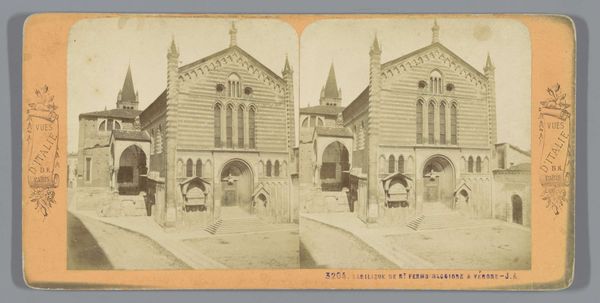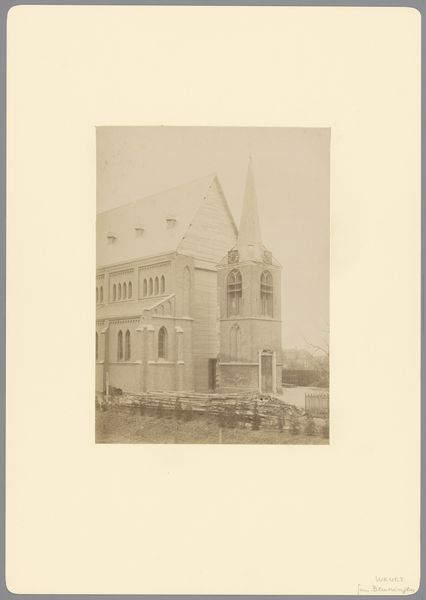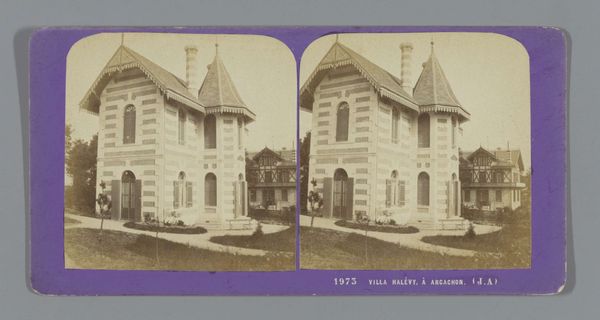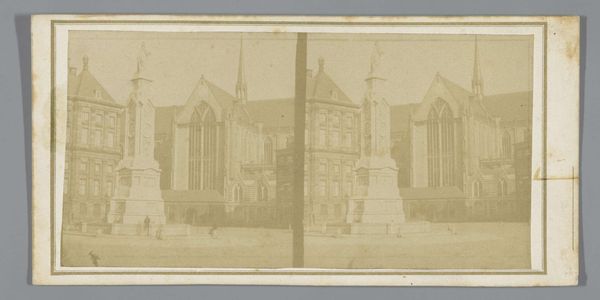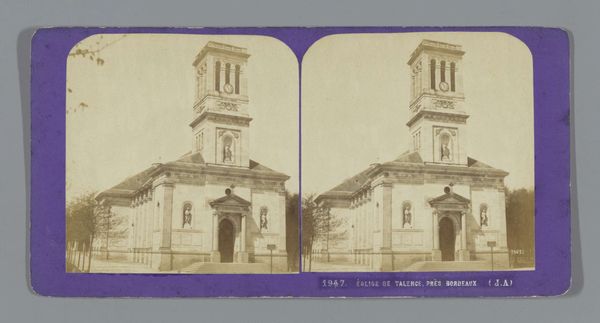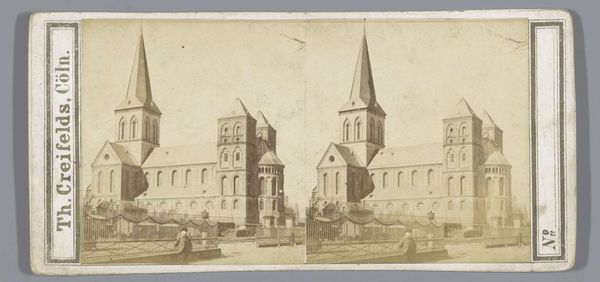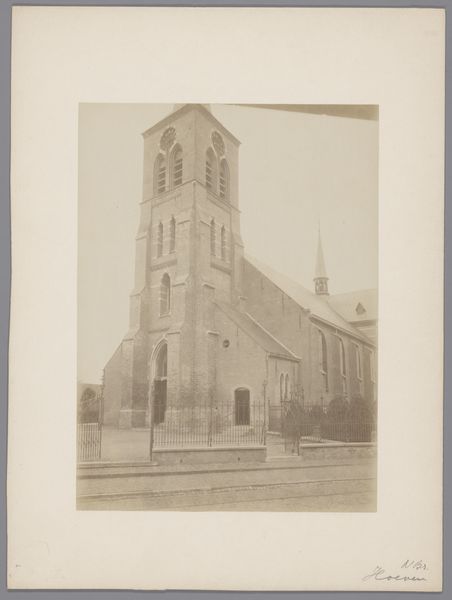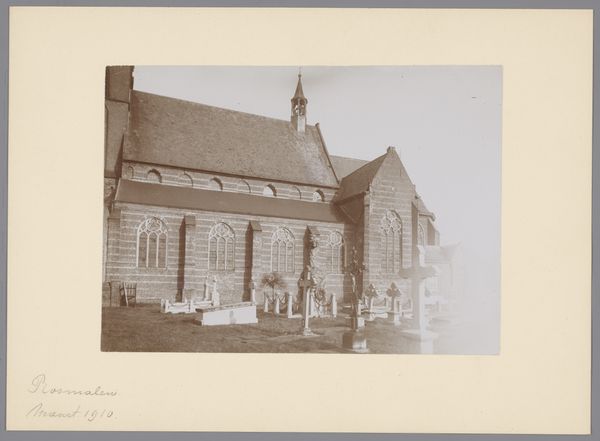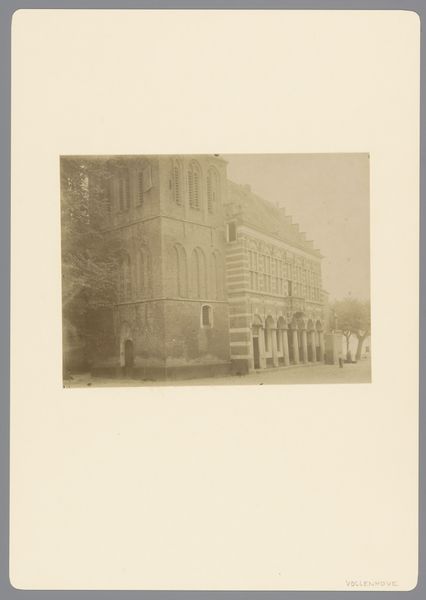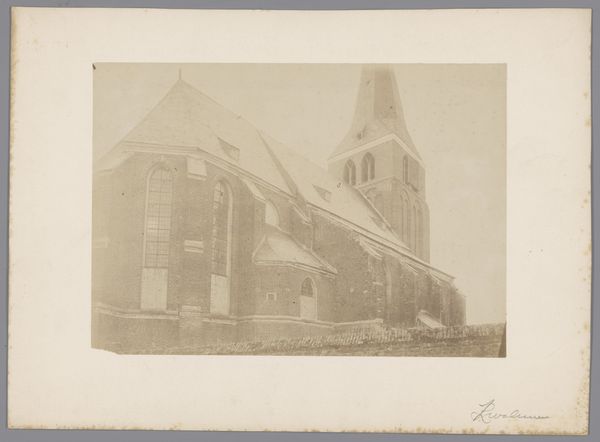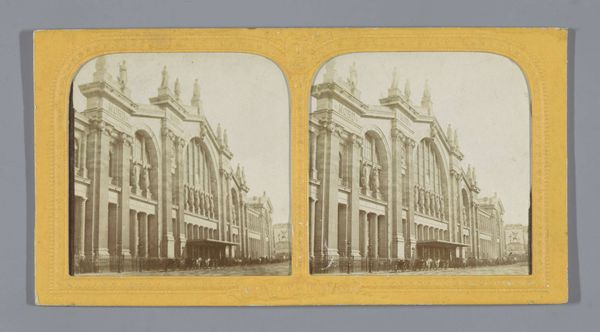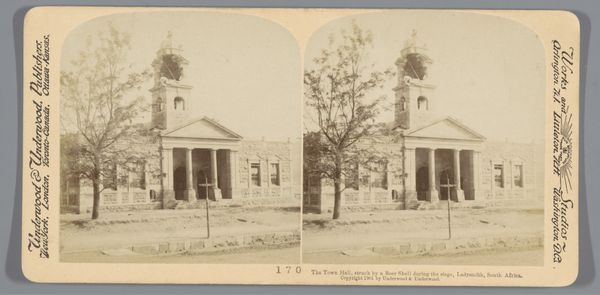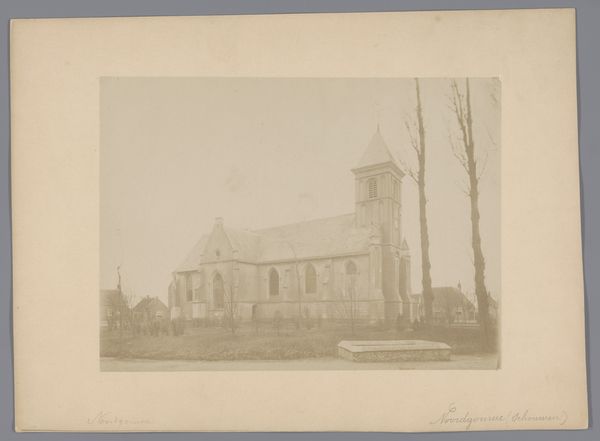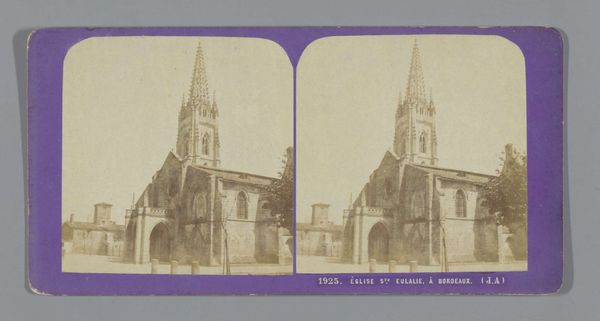
print, photography, architecture
# print
#
landscape
#
photography
#
architecture
Dimensions: height 87 mm, width 176 mm
Copyright: Rijks Museum: Open Domain
Curator: Immediately, the texture hits me. It’s a photographic print of the Norwegian pavilion at the 1878 World's Fair in Paris by Adolphe Block—so already there's a distancing. Photography of architecture removed by time... What do you make of it? Editor: The building seems so… polite. Clean lines, almost unassuming despite its purpose at a world exhibition. Yet something feels amiss; the print’s monochromatic filter obscures its political intent—it begs us to reimagine Norway’s architectural assertions on the global stage, especially amidst expanding imperialism. Curator: Ah, that polite erasure. You see the frame of the photograph—it is its own tiny stage for how nation states hoped to be perceived, filtered, made digestible to international audiences, a proto-Instagram perhaps? The architectural details hint at a kind of folksy grandeur, and this soft focus lends it the quality of a faded dream. Editor: Indeed, it represents Norway constructing a specific identity for a globalized audience. Consider this pavilion in light of debates surrounding cultural authenticity. Does the act of exhibiting national symbols dilute them, transforming heritage into spectacle, especially knowing that this pavilion probably stood near other national symbols and assertions from different countries across the globe? Curator: I feel it. Looking at it now, it is melancholy. Like looking at a ghost ship from a very polite society. Did Norway achieve what it hoped for through architecture that felt very… Norwegian? And who, exactly, decided that look? Editor: What strikes me is how it evokes nostalgia, almost inviting us to re-evaluate not only Norwegian identity but also the colonialist impulses woven into world exhibitions. I think, what’s missing are bodies, human figures inhabiting that nationalistic framing device and complicating those visual languages? Curator: Yes, I imagine throngs of visitors and yet all we get are quiet facades. A double-distillation of place and time. That, I think, is the heart of its quiet power for me: these photographic cards flatten not just form, but time, and experience too, demanding new kinds of readings. Editor: Block's stereoscopic card freezes a transient moment of national representation, demanding we unravel what those articulations obscured regarding cultural, economical, and historical dynamics and its continued resonance today. A powerful reflection, indeed. Curator: Exactly! The thing about history is it looks so static when really, we are always walking through it. Thank you!
Comments
No comments
Be the first to comment and join the conversation on the ultimate creative platform.
